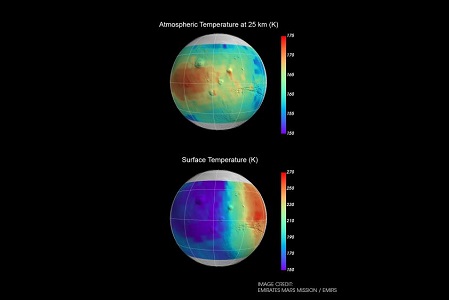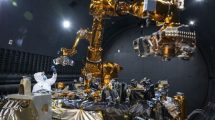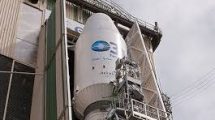 The Emirates Mars Mission, the first interplanetary exploration undertaken by an Arab nation, has announced the mission has completed spacecraft and instrument exercises used to practice science observations and is now ready to commence science data gathering. The two-years science mission formally commenced on May 23, aiming to yield the first complete picture of Mars’ lower and upper atmospheres throughout the day, night and seasons of a full Martian year.
The Emirates Mars Mission, the first interplanetary exploration undertaken by an Arab nation, has announced the mission has completed spacecraft and instrument exercises used to practice science observations and is now ready to commence science data gathering. The two-years science mission formally commenced on May 23, aiming to yield the first complete picture of Mars’ lower and upper atmospheres throughout the day, night and seasons of a full Martian year.
Omran Sharaf, Project Director of EMM, said: “Following a successful cruise to Mars, a near-perfect Mars Orbit Insertion manoeuvre and our transition from Hope’s capture orbit to our science orbit, we have completed our commissioning, calibration and testing phase. I am delighted to be able to report that the Mars Hope probe is perfectly positioned to commence its two-year science mission.”
The probe’s three instruments were activated on April 10 and a period of commissioning and testing followed.
Since the Hope probe entered orbit around Mars, the Emirates Mars Ultraviolet Spectrometer (EMUS) instrument has collected nearly 14,000 spectral-spatial images of the atmosphere, corresponding to 1.6m individual spectra. The observations will be repeated throughout the science phase, characterizing the composition and structure of the upper atmosphere as it changes within and across seasons.
The Hope probe Emirates Exploration Imager (EXI) imager has taken over 500 images of Mars since the transition to science orbit took place in early April and will now focus on mapping water ice clouds in the atmosphere as Mars enters its ‘cloudy season’. During this time, spring and summer in the Martian northern hemisphere, a belt of clouds forms near the equator. Hope will have a view of these clouds through its ability to observe the changing dynamics of the atmosphere throughout the daily and seasonal cycles.
The Emirates Mars Infrared Spectrometer (EMIRS) has been acquiring science demonstration data, refining instrument calibration and routinely processing data since Hope’s arrival at Mars. In total over 130,000 spectra have been acquired since arrival at Mars. More than 40 science demonstration observations have been acquired that span a significant portion of the planned local time coverage and encompass all observation scenarios. EMIRS will derive the surface temperatures, atmospheric temperature profiles, the column integrated water ice and dust opacities as well as the water vapour abundance over the full Martian day on sub-seasonal timescales. These observations, in combination with those of EXI and EMUS, will provide an insight into Martian weather and links to atmospheric escape processes.
Hope is following its planned 20,000 – 43,000 km elliptical science orbit, with an inclination to Mars of 25 degrees. The probe will complete one orbit of the planet every 55 hours and will capture a full planetary data sample every nine days.












Add Comment